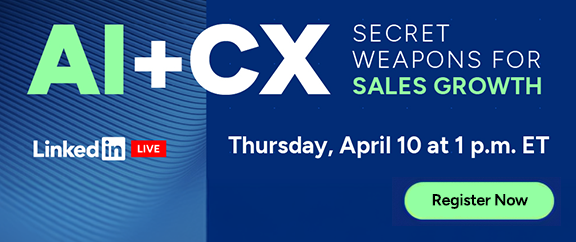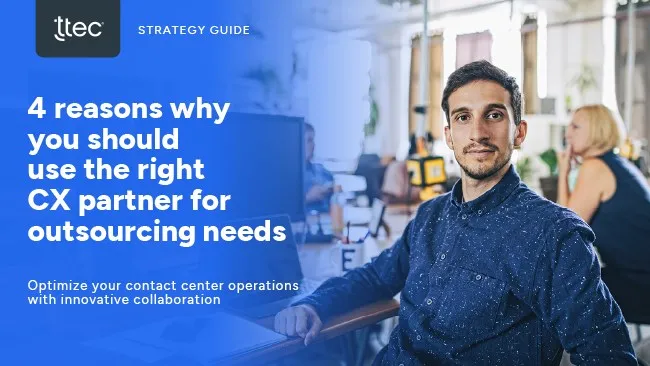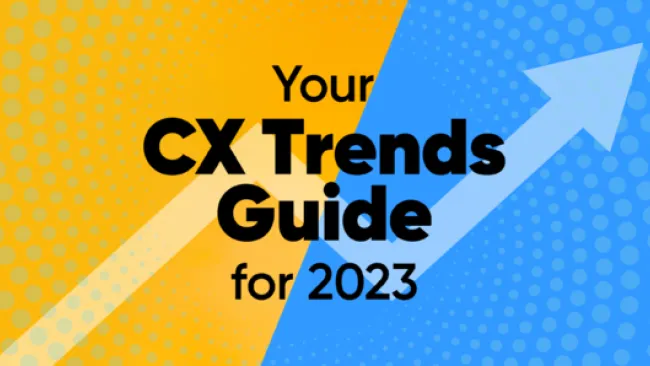We live in a world where everything but experience is being commoditized, and experience delivers greater returns when done well. That’s why organizations need customer-centric leadership to drive a customer experience (CX) culture from within.
Research by Walker showed that 91 percent of companies with an effective client experience strategy have a clear competitive advantage, and they grow on average 4 to 8 percent above their market. In fact, in most industries CX leaders are achieving double-digit growth while their peers are struggling with flat or declining results.
The challenge lies in the word ‘effective’ CX strategy. Making it effective means making it consistent. It should be a part of the operating rhythm of everyone from the front lines to the back office, who shape it into the DNA at an individual and collective level. But most leaders are struggling to keep up with business, let alone foster a CX culture. So to help guide CX leaders, here are four key insights to help guide and inspire successful CX leadership.
Insight #1 - Become the business that puts you out of business
The goal should no longer be ‘how do I continue grow the business as we did in the past’? Rather it needs to be more about understanding what clients need before designing the business model that puts the old version of you out of business. What separates CX leaders from their peers is their ability to understand underlying client needs and analyse the market, competitive landscapes, and emerging trends to position themselves to take the advantage.
Don’t let competitors’ actions dictate the next move. Consider what would change the game and then have the courage to evolve your business. Hockey’s Great One, Wayne Gretsky, was once asked what he believed was the secret to his success. He said, ‘I skate to where the puck is going to be, not to where it has been’. If you think about it, this mentality applies to almost every competitive sport, game, or business.
One of the ways organisations should deepen their perspective is to visualise the journey their customers take. However, this is often done wrong, with a linear view on what this journey looks like. This is a business process map in disguise. We have worked with several clients to help understand the reality of the non-linear client journey, which helps visualise where gaps exist, where changes should be made, where interventions should occur, and where opportunities exist.
But don’t stop there. The same methodology should be applied to employees too. Consider what their journey looks like, what their expectations are, and what opportunities exist to enable an incredible employee experience.
Insight #2 - Measure metrics that motivate
Exceptional CX leaders avoid setting uninspiring commercial goals that nobody believes are important, and they never set goals without a clear path for how they might be achieved. Their goals and ambitions centre on the client rather than the company. In the end people love doing great things for people, the trick here is to let them. Empower them to create great client outcomes and reap the benefit of intrinsic motivation.
To build true momentum, reconsider KPIs. Often, they are put in place based on a belief that employees would not do what is asked of them without either a reward or a consequence—the carrot or the stick approach. This is almost an admission that the vision or purpose of the business is not compelling enough for employees to want to do a great job.
Science shows that carrots and sticks that are disconnected to a clear purpose (one that is good for clients, good for the business and good for employees) have some very negative consequences: Extinguishes intrinsic motivation, diminishes performance, crushes creativity, encourages cheating, shortcuts, and unethical behaviour, and fosters short-term thinking.
Rethink how to measure people. Are they forced to work in isolation or contribute to something bigger? Be sure to explicitly link KPIs with a clear purpose.
Insight #3 - Cancel command and control leadership
Years ago, an old teammate of mine went on leave to assist in Barack Obama’s election campaign. He described the former U.S. president as inspiring and motivating the team during his election campaign. Everyone on his team went the extra mile to get past the finish line.
Researchers from Michigan University’s School of Business call this ‘Relational Energy’. The study showed that when we interact with other people, we “infect” them with our energy. Relational energy—positive or negative—impacts levels of motivation and performance. Exceptional CX leaders infect their teams with inspiration and motivation.
The ability to inspire and motivate others and the ability to influence outcomes rather than command and control is a muscle that needs to be developed. And in our experience, we’ve helped leaders train that muscle. For the last three years, we’ve worked with a leading European bank to help its leaders develop the ability to lead through influence. We’ve taken a systematic approach, starting with the executive leaders and cascading down, focusing on how to engage at an emotional level. This piece of work has been one factor in the bank outperforming other major banks in both employee and client engagement scores.
A leader’s ability to inspire and motivate their people isn’t just about how they are coming across. It’s also about the organisational systems and structures they put in place. For example, client feedback loops, such as voice of client data, allow individuals and teams that are not client-facing to make more informed and more client-centric decisions based on what they’re hearing directly from clients.
Insight #4 - Shatter silos from the top down
The fourth leadership competency most correlated to employee engagement is collaboration and teamwork. Leaders need to shatter silos from the top down, because collaboration is the engine of innovation. And given the rapid pace of change and disruption that every industry is facing, companies can only keep pace if they are constantly innovating.
Leaders need to support, nurture, and reward collaboration. Take Amazon, one of the most innovative companies on the planet. Its founder and CEO, Jeff Bezos, said that if his people have a one-in-10 chance of making 100 times return on an investment, he wants them to make that bet every time. That means leaders at Amazon must expect their people to fail nine out of 10 times on the big bets, knowing the one pay-off is enormous. But it also means risk taking, ‘putting butter on the toast’.
In simple terms, leaders need to move their organisations away from playing Grand Slam tennis, where there can be only one winner and one ‘right idea’, and instead move toward a Davis Cup culture where team performance is important.
Essentially what leaders need to create are ‘watercooler conversations’, where ideas flow freely and generate new thinking. But as companies move towards remote working, demographic fragmentation, and global teams, watercooler conversations are in danger of becoming a thing of the past.
The solution to this problem lies with social collaboration through digital technology. For example, we recommend creating a knowledge-sharing portal that promotes:
- Connection, collaboration, and productivity
- Drives conversations
- Helps close deals
- Creating a virtual ecosystem connecting a remote workforce
- Shared IP and IQ across the organisation
Put ideas into action
Overall, think about what the competition would do that would change the game—it’s remarkable how many innovative ideas come out of this exercise. Then consider what memories and emotions would need to set for this story to come true. The objective should then move to considering what would need to be true to triggering these reactions, rather than trying to manipulate the story. Remember, emotions = memories = stories.
When a leader encourages employees be emotionally invested into the story of a company, it will be easier for everyone in the organisation to make decisions to drive better experiences and outcomes.


















